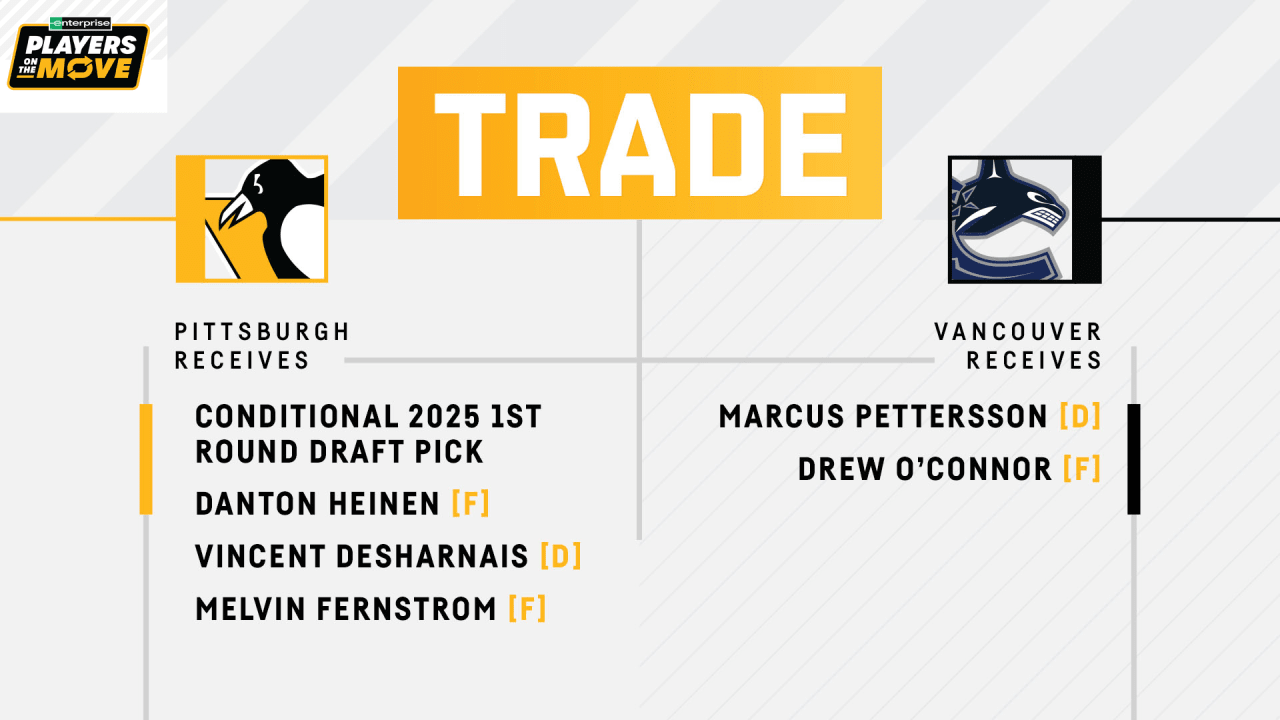The Pittsburgh Penguins now possess two first-round picks in the 2025 NHL Entry Draft after the New York Rangers surrendered their selection to fulfill a conditional trade requirement. This unexpected development significantly alters the Penguins' draft strategy and raises questions about potential trade scenarios. The Rangers' decision, while risky, reflects their strategic assessment of their roster's immediate and future prospects.
Rangers' 2025 First-Rounder Shifts to Penguins

The New York Rangers have relinquished their first-round pick in the 2025 NHL Entry Draft to the Pittsburgh Penguins. This transfer stems from a previously agreed-upon condition within the trade that sent JT Miller to the Rangers. The Rangers initially acquired the pick from the Vancouver Canucks as part of the Miller trade package.
A Conditional Trade and its Fallout

The Rangers subsequently traded this acquired pick to the Penguins to obtain players and secure contract extensions. A crucial condition attached to this trade allowed the Rangers to retain the pick if it fell outside of the top 13. Since the pick fell within that range, the Rangers had the option to keep it, sacrificing their 2026 unprotected first-round pick to the Penguins.
Analyzing the Rangers' Decision: Risk and Reward

The Rangers' decision to surrender their 2025 first-round pick is a calculated gamble. While it forgoes a high-value asset this year, it removes the risk of surrendering a potentially higher pick in the future if the team's performance improves unexpectedly. The team may have also explored trade options to move up in this year's draft, but those efforts appear to have been unsuccessful.
The Penguins' Strategic Advantage

The acquisition of a second first-round pick significantly boosts the Penguins' draft capital. General Manager Kyle Dubas now has enhanced flexibility, enabling him to either select two promising prospects or package the picks to trade up and acquire a higher-ranked player. This situation creates numerous strategic avenues for the Penguins.
Historical Precedents and Trade Risks

Several past NHL trades illustrate both the potential benefits and significant risks of such conditional pick exchanges. The Eric Carlson trade involving the San Jose Sharks and Ottawa Senators, and the Matt Duchene trade between the Senators and the Colorado Avalanche serve as prominent examples. These past trades showcase that the long-term implications of such decisions can be unpredictable and vary greatly based on subsequent team performance and draft outcomes.
Dubas's Dilemma: Prospects or Trade Up?

Dubas faces a crucial decision: Use both picks to draft two players, or consolidate the picks for a higher draft position to target a more established talent. The Penguins’ organizational needs and overall strategic direction should guide this crucial choice. The opportunity to package picks to improve draft position significantly enhances their overall prospects.
Looking Ahead: The Impact on Both Teams

The Rangers' decision might ultimately prove beneficial or detrimental, depending on their future performance. If their team improves significantly, giving up the pick may sting. If their team underperforms, keeping their 2026 pick would become more beneficial. For the Penguins, the double first-round selection provides a considerable advantage, offering valuable flexibility in their draft and trade strategies. The impact of this trade on both teams’ futures will undoubtedly be a major storyline heading into the 2025 NHL Entry Draft.